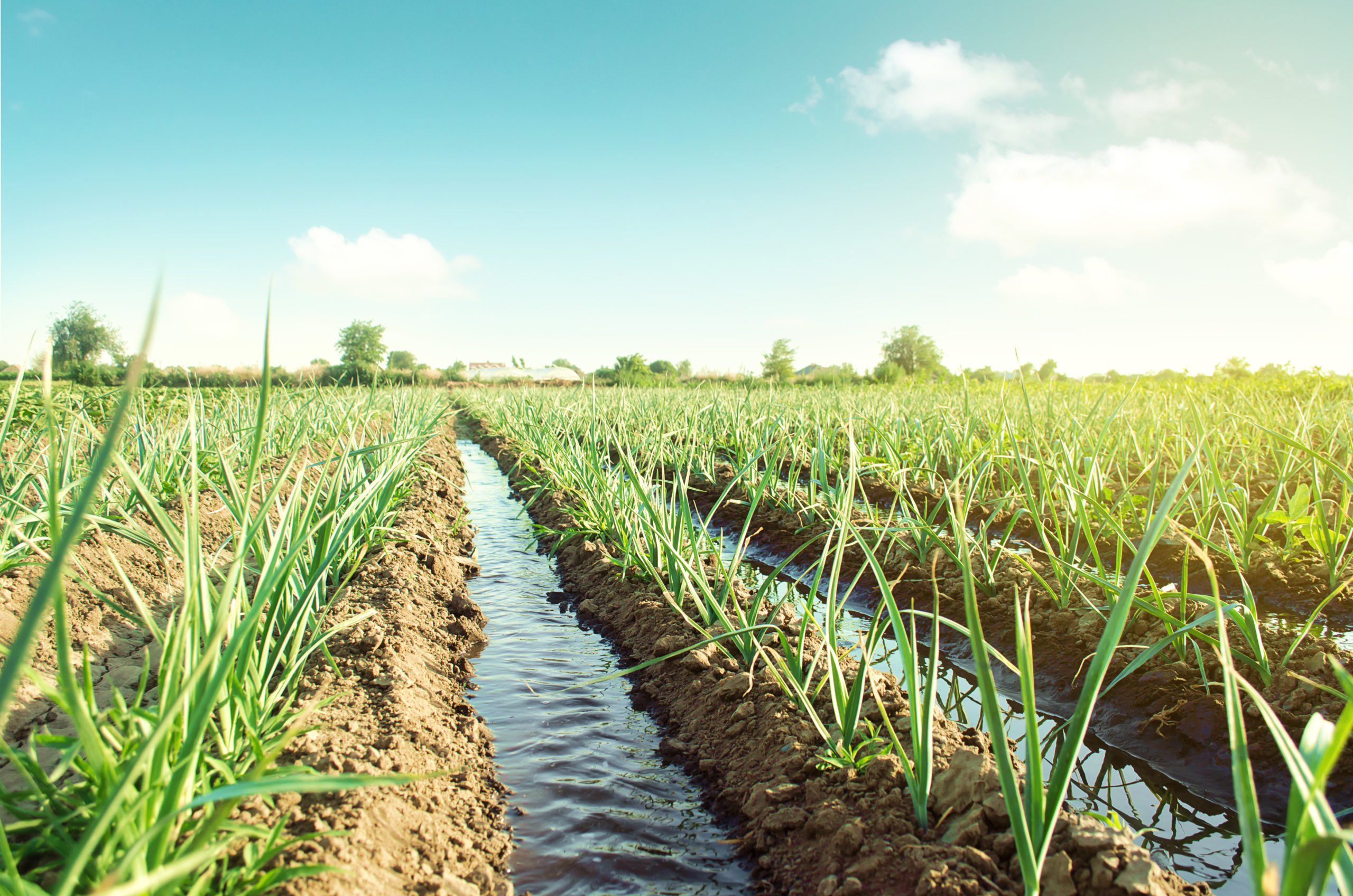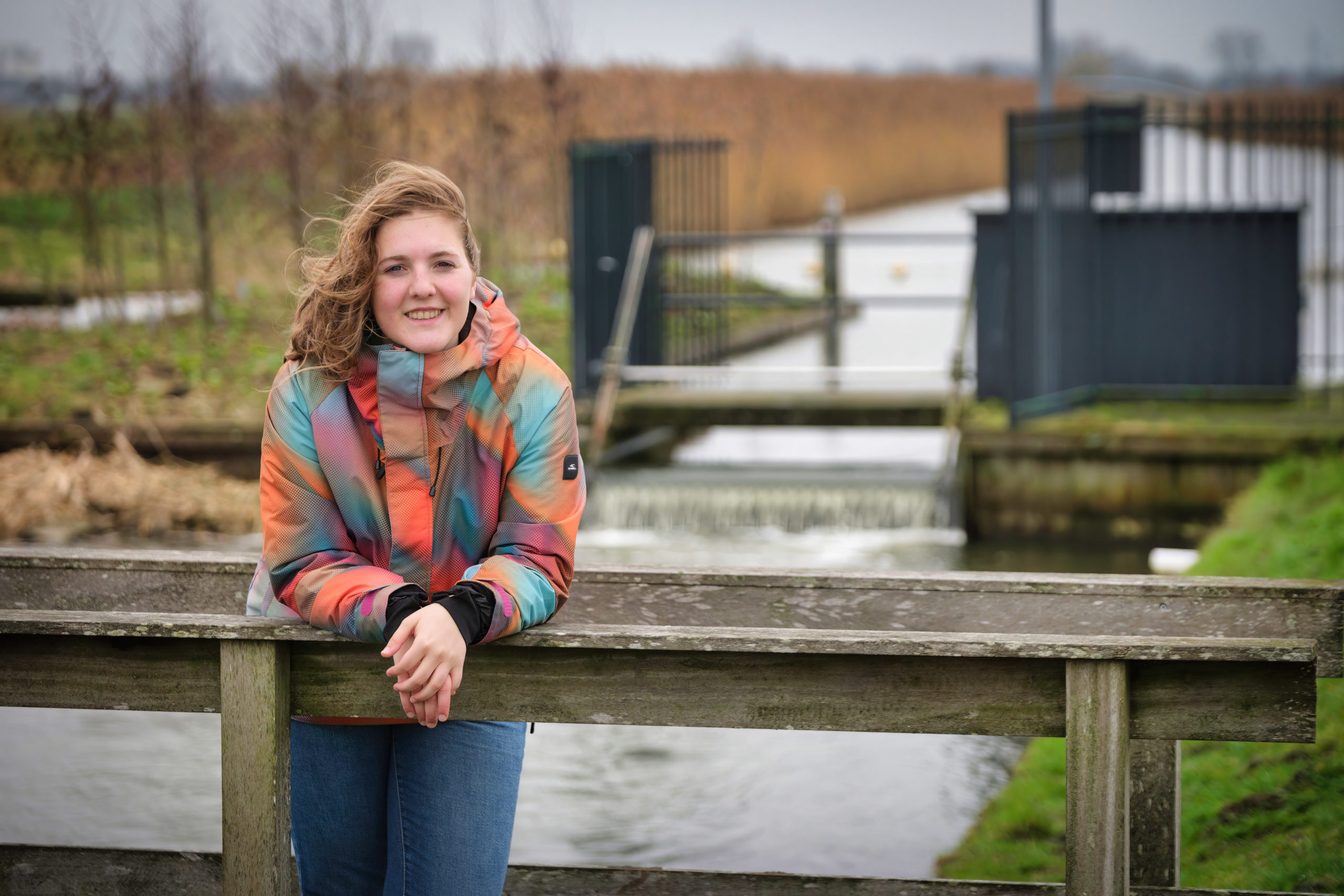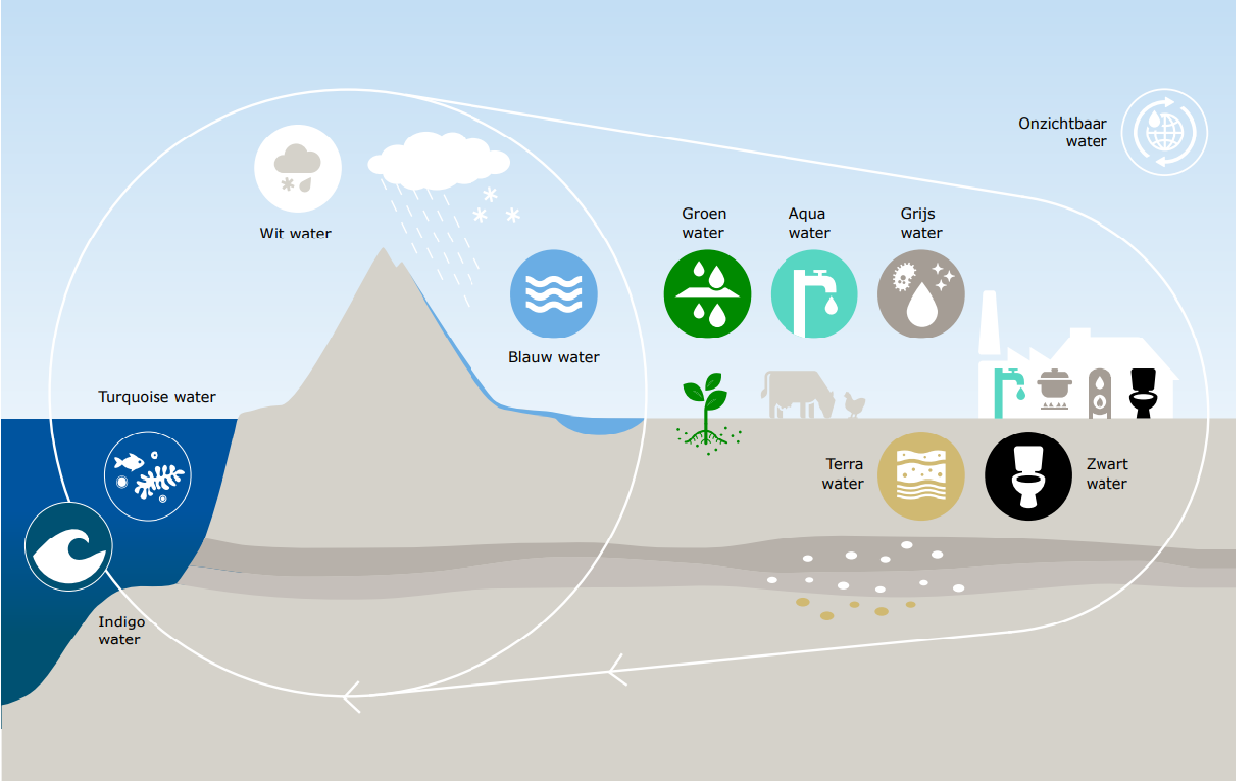How can we make better use of scarce water during dry periods in the Netherlands? For the next six years, WUR will be working with its partners in the AquaConnect programme to find solutions for sectors including horticulture, industry and nature.
The Netherlands faces increasingly frequent water shortages due to severe droughts. At such times, farmers are asked to use less surface water to irrigate their crops, and industry to use less water for production processes and cooling. The AquaConnect research programme — led by Huub Rijnaarts, professor of Environmental Technology at WUR — is going to look for ways of solving this water shortage. Researchers are looking into whether treated wastewater and brackish groundwater could be reused to reduce the pressure on sensitive ecosystems and on finite sources of fresh water.
AquaConnect is creating a network that connects supply sand demand
The Netherlands has two distribution systems for fresh water. The first one is a fine-meshed network that provides all houses with drinking water, and the second is the system of rivers, lakes, canals and ditches in which the surface water is stored and transported. The Dutch water boards work continuously on storing, depositing and transporting water. Increasingly, the question is whether we are storing enough water to be able to meet the demand for water in the summer. So AquaConnect is developing a third water system for the Netherlands: a series of decentralized networks that link up demand and supply.
Salt
The situation in Zeeuws-Vlaanderen is an interesting case. The Wageningen PhD student Joeri Willet is studying the water consumption of the Dow chemical company in Terneuzen. His study is part of the Water Nexus research programme, which AquaConnect follows on from. Dow uses a lot of fresh water (10 million cubic metres per year) for cooling purposes. At present, the company gets its water from several different sources, such as a Belgian polder, a wastewater purification plant in Terneuzen, and the Biesbosch delta. But the water from the Biesbosch may in future be needed to supply drinking water for the Rotterdam area.
So Willet is looking for alternative sources of water for Dow. He is working on a water grid, a network of local water sources that are always available for meeting Dow’s needs. He is evaluating a total of 25 water sources, both surface water from the polders of Zeeland and groundwater. For the groundwater, salt concentration is an issue – if you extract too much groundwater in a coastal area, it causes seawater to penetrate the area, increasing the salinization of the groundwater. Willet’s question is always firstly: what combination of water sources meets the needs of a company such as Dow sustainably? And secondly: how does the water get from the source to the factory? His model includes 400 possible pipeline routes for transporting the water.
Water purification is an option for making more fresh water available
‘First I look at which sources that meet Dow’s quality requirements could supply the water,’ explains Willet. ‘And secondly I look at whether I can make use of water that is of poorer quality but more conveniently located close to the factory. That water, which might be brackish, for example, could be mixed with clean water, producing water of a quality good enough for Dow. And thirdly, I look at the possibilities for purifying water from a source like this.’ He always has to weigh up the pros and cons. Willet: ‘Do we source water from far away, laying a pipeline for it? Or do we purify water that is locally available? And what are the costs and the CO2 emissions of both options?’ AquaConnect is going to do the calculations on this example for companies in other regions of the Netherlands.
Purification
So water purification is one of the options for increasing the supply of fresh water in dry periods. And this is where Jouke Dykstra, who teaches in the Environmental Technology group, goes into action. ‘Sometimes we need water purification so the water fulfils the requirements. I’m looking at what techniques we need to do that, working with colleagues from the University of Twente.
Basically, there are two techniques available: biological purification and physical-chemical purification. ‘The advantages of biological purification are that it is effective and reasonably cheap,’ says Dykstra. ‘But the disadvantage of a biological process like that is that it takes some time to get it started and you need stable quantities of water to purify. If we need to be able to meet a demand for water fast or flexibly, perhaps we should use a different purification technique.’
‘You don’t want water with drug residues in it in your food system, but for a petrochemical company, rinsing water with some drug residues in it is no problem’
At AquaConnect, two physical-chemical processes are the main focus: nanofiltration and electrodialysis. In nanofiltration, the wastewater is passed through membranes that extract organic compounds. Electrodialysis is a combination of an electric field and a membrane. Dykstra: ‘With nanofiltration, you can easily remove polyvalent ions (such as Ca2+ en Mg2+) and larger organic compounds. What is left in the water after that is mainly small monovalent ions such as sodium (Na+) en chloride (Cl–). You can remove them with electrodialysis. You desalinate the water with this technique and you get fairly clean water, though it’s not drinking water quality.’
Market gardeners
These techniques are being used in a second AquaConnect case in which researchers are looking into the reuse of water for the market gardeners in the Westland area, where fresh water is in short supply. ‘If we start pumping up brackish groundwater in Westland,’ says Dykstra, ‘we must first apply nanofiltration to remove the larger organic compounds. Then we must lower the salt concentration using electrodialysis, but retaining the valuable ions such as calcium. You could build that kind of purification installation in the area to supply the market gardeners with the purified water.’ AquaConnect is going to research whether this is the best option. One alternative would be to use more purified wastewater from houses and companies in the Rotterdam region for horticulture.
While salinization of ground- and surface water are key issues for fresh water supplies along the Dutch coast, on the dry sandy soils of the eastern Netherlands, different issues are at stake. Thanks to the dry spring months of recent years, streams have run dry and woodland is drying up too. The question here is: how can we provide farms and nature with sufficient water in dry periods?
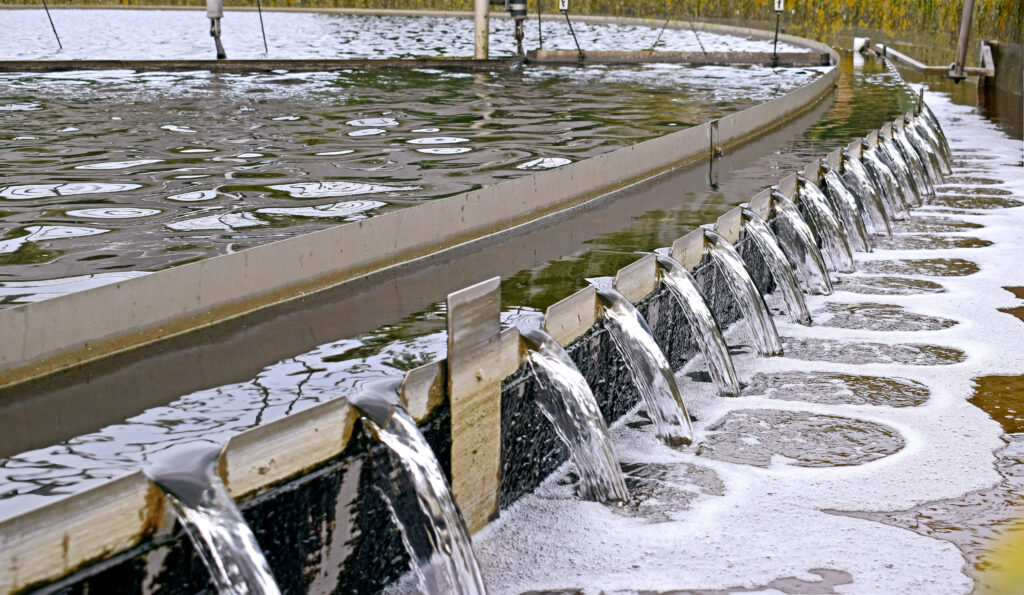
Twellose Beek
AquaConnect’s third case builds on an existing project: the ‘Wilp Water Factory’ in Gelderland, where a water purification plant is under construction to feed a stream called the Twellose Beek with wastewater. The Water Factory is going to capture rainwater and wastewater separately and purify it so that as many valuable substances as possible can be extracted for reuse. The remaining clean water is then emptied into the Twellose Beek to protect nature and maintain underground drinking water supplies. The idea is that AquaConnect will do further research and development on this in other parts of the eastern Netherlands.
This is an interesting challenge for water purification companies, because the water from the average purification plant is not clean enough for a nature area. The bacteria in the installations break down many substances, but not all the drug residues and pesticides. ‘There are hundreds of chemicals in our water system in extremely small but measurable quantities,’ says research coordinator Huub Rijnaarts. ‘Nineteen of them are problematic and we target those with our water purification technology.’ One example is carbamazepine, a drug that is extremely hard to break down with biological purification techniques. This is one of the substances the Water Factory has to be able to deal with.
Rijnaarts: ‘There is no point in completely purifying all water to the level of drinking water quality using membranes. You’ll be left with concentrated wastewater, and where is that then supposed to go? And anyway, it’s much too expensive. It is a better idea to reuse water and then the question is always: what water quality is called for? You don’t want water with drug residues in it in your food system, but for a petrochemical company, rinsing water with small quantities of drug residues in it is no problem. So we are creating a network that connects suppliers with clients so we can use varying levels of purification to deliver customized water quality.’
Wageningen researcher Huub Rijnaarts’ AquaConnect programme focuses on the reuse of wastewater and brackish groundwater to have bigger reserves of water during periods of drought in the Netherlands. The project will receive over four million euros from the Science Research Council’s Perspectief programme and a further two million euros from industry and civil society organizations. WUR will be collaborating in AquaConnect with the Technical University of Eindhoven, Utrecht University, the Technical University of Delft, the University of Amsterdam, VU University Amsterdam and the University of Twente. The research is due to start this autumn and to be spread over six years.

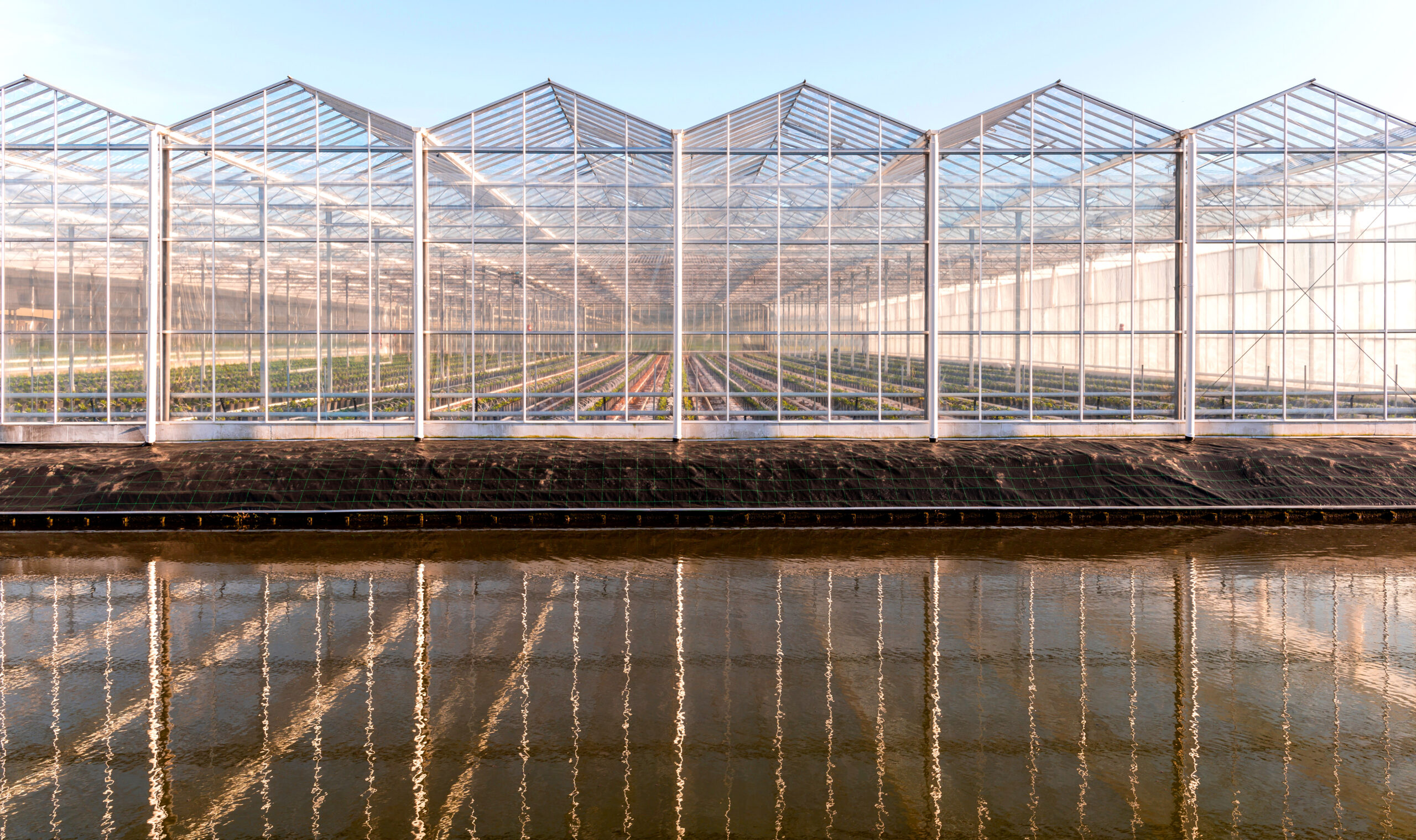 A flower greenhouse in Maasdijk. Fresh water is in short supply in the Westland area. AquaConnect is researching whether brackish groundwater can be purified to make it usable for market gardeners. Photo: Shutterstock
A flower greenhouse in Maasdijk. Fresh water is in short supply in the Westland area. AquaConnect is researching whether brackish groundwater can be purified to make it usable for market gardeners. Photo: Shutterstock 